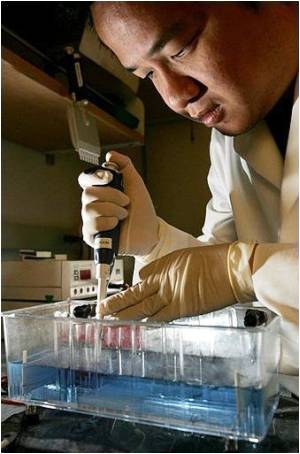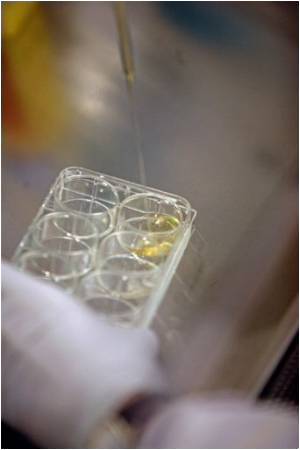A team of scientists has developed a way to coax tumor cells in the lab to grow into 3-D spheres. Their discovery takes advantage of an earlier

Three years ago, the team -- in collaboration with Lisa DeLouise, Ph.D., MPD, of Rochester, N.Y. -- perfected a low-cost, easy fabrication technique to make spherical cavities in PDMS (polydimethylsiloxane), a widely used silicon organic polymer. More recently, the Cornell team discovered that these cavities could be used as a scaffolding to grow numerous tumor spheroids, which could serve as realistic models for cancer cells. The Cornell team's work appears in the current issue of Biomicrofluidics, a publication of the American Institute of Physics.
The three-dimensional spheroids hold the potential to speed cancer drug discovery by providing a realistic and easily accessible substrate on which to test drugs. Their 3-D nature is an asset because in the body, tumor cells grow in 3-D—yet most laboratory studies of cancer have been done in 2-D, with a single layer of cancer cells grown on the bottom of a petri dish. Too often a promising 2-D drug candidate fails when it enters the 3-D stage of animal testing. The new 3-D tumor spheroids may help eliminate that problem. They also offer a realistic tumor oxygen environment that cues the blood vessel growth that nourishes tumors—an appealing target for anti-cancer drug design.
"Basically, any laboratory that works with cells could adopt our new spherical microcavity system to do their own 3-D experiments or drug screening on hundreds or even thousands of little tumor spheroids," said King.
Source-Eurekalert










